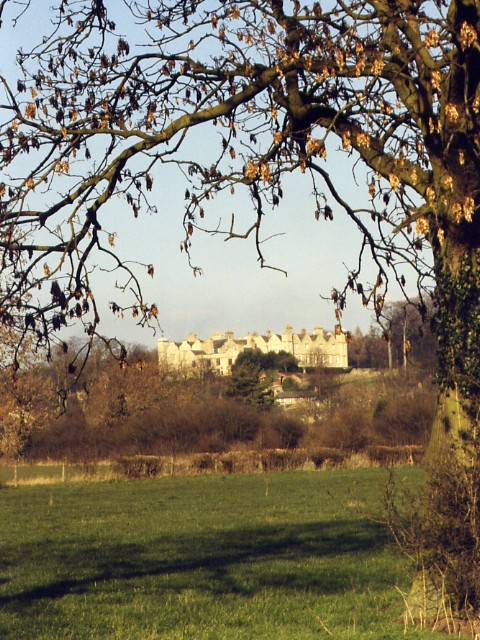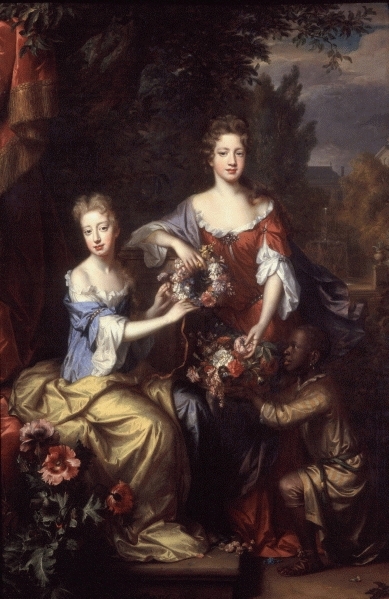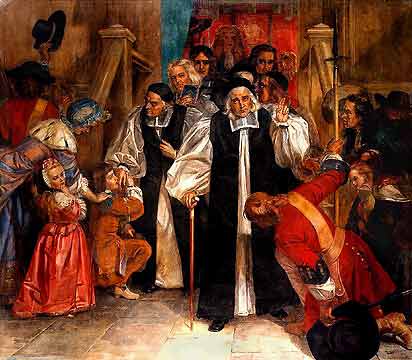|
Mary Astell
Mary Astell (12 November 1666 – 11 May 1731) was an English protofeminist writer, philosopher, and rhetorician. Her advocacy of equal educational opportunities for women has earned her the title "the first English feminist."Batchelor, Jennie,Mary Astell. ''The Literary Encyclopedia''. 21 March 2002. Accessed 6 July 2008. Early life Few records of Mary Astell's life have survived. As biographer Ruth Perry explains: "as a woman she had little or no business in the world of commerce, politics, or law. She was born, she died; she owned a small house for some years; she kept a bank account; she helped to open a charity school in Chelsea: these facts the public listings can supply." Only four of her letters were saved and these because they had been written to important men of the period. Researching the biography, Perry uncovered more letters and manuscript fragments, but she notes that if Astell had not written to wealthy aristocrats who could afford to pass down entire estate ... [...More Info...] [...Related Items...] OR: [Wikipedia] [Google] [Baidu] |
Judith Drake
Judith Drake ( fl. 1670s–1723) was an English intellectual and author who was active in the last decade of the 17th century. She was part of a circle of intellectuals, authors, and philosophers which included Mary Astell, Lady Mary Chudleigh, Elizabeth Thomas, Elizabeth Elstob, Lady Mary Wortley Montagu, and John Norris. She was married to James Drake F.R.S., physician and Tory pamphleteer. She is remembered in the field of feminist literature for her 1696 essay, ''An Essay in Defence of the Female Sex''. Women writers at the end of the 17th century When Judith Drake and the other intellectuals of her circle began writing, they were still a minority and subject to much nay saying. Recently there had been a loosening of censorship of printed books. A few women took this opportunity to publish on gender relationships. Because of their efforts as well as the rise in female literacy, the literary world entered into the debate about women. ''An Essay in Defence of the Female Sex' ... [...More Info...] [...Related Items...] OR: [Wikipedia] [Google] [Baidu] |
Chelsea Old Church
Chelsea Old Church, also known as All Saints, is an Church of England, Anglican church, on Old Church Street, Chelsea, London, Chelsea, London SW3, England, near Albert Bridge, London, Albert Bridge. It is the church for a parish in the Diocese of London, part of the Church of England. Inside the Grade I listed building, there is seating for 400 people. There is a memorial plaque to the author Henry James (1843–1916) who lived nearby on Cheyne Walk, and was buried in Cambridge, Massachusetts. To the west of the church is a small public garden containing a sculpture by Sir Jacob Epstein. History Norman origins Chelsea Old Church dates from 1157. It was formerly the parish church of Chelsea, before it was engulfed by London. The building consisted of a 13th-century chancel with chapels to the north and south (c. 1325) and a nave and tower built in 1670. 16th century and Sir Thomas More The chapels were private property. The one to the north was called the Lawrence Chapel and was ... [...More Info...] [...Related Items...] OR: [Wikipedia] [Google] [Baidu] |
Mastectomy
Mastectomy is the medical term for the surgical removal of one or both breasts, partially or completely. A mastectomy is usually carried out to treat breast cancer. In some cases, women believed to be at high risk of breast cancer have the operation as a preventive measure. Alternatively, some women can choose to have a wide local excision, also known as a lumpectomy, an operation in which a small volume of breast tissue containing the tumor and a surrounding margin of healthy tissue is removed to conserve the breast. Both mastectomy and lumpectomy are referred to as "local therapies" for breast cancer, targeting the area of the tumor, as opposed to systemic therapies, such as chemotherapy, hormonal therapy, or immunotherapy. The decision to perform a mastectomy is based on various factors, including breast size, the number of lesions, biologic aggressiveness of a breast cancer, the availability of adjuvant radiation, and the willingness of the patient to accept higher rates of t ... [...More Info...] [...Related Items...] OR: [Wikipedia] [Google] [Baidu] |
Society For The Propagation Of Christian Knowledge
The Society for Promoting Christian Knowledge (SPCK) is a UK-based Christian charity. Founded in 1698 by Thomas Bray, it has worked for over 300 years to increase awareness of the Christian faith in the UK and across the world. The SPCK is the oldest Anglican mission organisation in the world, though it is now more ecumenical in outlook and publishes books for a wide range of Christian denominations. It is currently the leading publisher of Christian books in the United Kingdom and the third oldest independent publisher in the UK. Mission The SPCK has a vision of a world in which everyone is transformed by Christian knowledge. Its mission is to lead the way in creating books and resources that help everyone to make sense of faith. Education has always been a core part of SPCK's mission. History Foundation On 8 March 1698, Rev. Thomas Bray met a small group of friends, including Sir Humphrey Mackworth, Colonel Maynard Colchester, Lord Guilford and John Hooke at Lincoln's ... [...More Info...] [...Related Items...] OR: [Wikipedia] [Google] [Baidu] |
Lady Elizabeth Hastings
Lady Elizabeth Hastings (19 April 1682 – 21 December 1739), also known as Lady Betty, was an English philanthropist, religious devotee and supporter of women's education. She was an intelligent and energetic woman, with a wide circle of connections, including artists, writers and designers, an astute business investor and proponent of innovative farming techniques. She refused several marriage offers and on her death in 1739, her nephew Francis inherited her estate at Ledston. The rest of her property was used to endow various educational trusts, which still provide funds for scholarships at The Queen's College, Oxford, and the 'Lady Elizabeth Hastings Charities'. In addition, a number of primary schools in West Yorkshire bear her name. Biography Elizabeth was born in April 1682, to Theophilus Hastings, 7th Earl of Huntingdon (1650–1701) and his first wife Elizabeth Lewis, co-heiress of Sir John Lewis, a wealthy merchant who owned Ledston Hall, in West Yorkshire. Of nine ... [...More Info...] [...Related Items...] OR: [Wikipedia] [Google] [Baidu] |
Lady Catherine Jones
Lady Catherine Jones (1672 – 14 April 1740) was an English philanthropist, interested in women's rights and education, and chose to be buried with her long-time friend, Mary Kendall (8 November 1677 – 4 March 1710), inside Westminster Abbey. Biography Lady Catherine Jones was the daughter of Richard Jones, 1st Earl of Ranelagh, and Elizabeth (d. 1695), daughter of Francis Willoughby, 5th Baron Willoughby of Parham. Her sister, Elizabeth, married John FitzGerald, 18th Earl of Kildare. Her twin sister Frances (1672–1715) married Thomas Coningsby, 1st Earl Coningsby. Her brothers, Edward (1675–1678) and Arthur, died young. Her own grandmother, Katherine Jones, Viscountess Ranelagh, was a female scientist, a political and religious philosopher, and a member of many intellectual circles including the Hartlib Circle, the Great Tew Circle, and the Invisible College. In 1695 John Norris (philosopher), John Norris, philosopher, dedicated ''Letters Concerning the Love of God'' to ... [...More Info...] [...Related Items...] OR: [Wikipedia] [Google] [Baidu] |
Hortense Mancini
Hortense Mancini, Duchesse de Mazarin (6 June 1646 – 2 July 1699), was a niece of Cardinal Mazarin, chief minister of France, and a mistress of Charles II, King of England, Scotland, and Ireland. She was the fourth of the five famous Mancini sisters, who, along with two of their female Martinozzi cousins, were known at the court of King Louis XIV of France as the Mazarinettes. Early life, family and marriage One of five sisters noted for their great beauty, she was born ''Ortensia'' in Rome to Baron Lorenzo Mancini, an Italian aristocrat. After his death in 1650, her mother, Girolama Mazzarini, brought her daughters from Rome to Paris in the hope of using the influence of her brother, Cardinal Mazarin, to gain them advantageous marriages. Hortense's four famous sisters were: * Laura (1636–1657), who married Louis de Bourbon, duc de Vendôme and became the mother of the famous French general Louis Joseph de Bourbon, duc de Vendôme, * Olympe (1638–1708), who married Princ ... [...More Info...] [...Related Items...] OR: [Wikipedia] [Google] [Baidu] |
Bathsua Makin
Bathsua Reginald Makin (; 1600 – c. 1675) was a teacher who contributed to the emerging criticism of woman's position in the domestic and public spheres in 17th-century England. Herself a highly educated woman, Makin was referred to as England's most learned lady, skilled in Greek, Latin, Hebrew, German, Spanish, French and Italian. Makin argued primarily for the equal right of women and girls to obtain an education in an environment or culture that viewed woman as the weaker vessel, subordinated to man and uneducable. She is most famously known for her polemical treatise entitled ''An Essay to Revive the Ancient Education of Gentlewomen, in Religion, Manners, Arts & Tongues, with an Answer to the Objections against this Way of Education'' (1673). Life She was born in 1600 and named after the biblical Bathsheba. Makin was the daughter of Henry Reginald or Reynolds, who was a schoolmaster of a school in Stepney and published a broadsheet of Latin poems and pamphlets on mathema ... [...More Info...] [...Related Items...] OR: [Wikipedia] [Google] [Baidu] |
Nonjuring Schism
The Nonjuring schism refers to a split in the State religion, established churches of England, Scotland and Ireland, following the deposition and exile of James II of England, James II and VII in the 1688 Glorious Revolution. As a condition of office, clergy were required to swear allegiance to the ruling monarch; for various reasons, some refused to take the oath to his successors William III of England, William III and II and Mary II of England, Mary II. These individuals were referred to as ''Non-juring'', from the Latin verb ''iūrō'', or ''jūrō'', meaning "to swear an oath". In the Church of England, an estimated 2% of priests refused to swear allegiance in 1689, including nine bishops. Ordinary clergy were allowed to keep their positions but after efforts to compromise failed, the six surviving bishops were removed in 1691. The schismatic Non-Juror Church was formed in 1693 when William Lloyd (bishop of Norwich), Bishop Lloyd appointed his own bishops. His action was opp ... [...More Info...] [...Related Items...] OR: [Wikipedia] [Google] [Baidu] |
Glorious Revolution
The Glorious Revolution; gd, Rèabhlaid Ghlòrmhor; cy, Chwyldro Gogoneddus , also known as the ''Glorieuze Overtocht'' or ''Glorious Crossing'' in the Netherlands, is the sequence of events leading to the deposition of King James II and VII of England and Scotland in November 1688, and his replacement by his daughter Mary II and her husband and James's nephew William III of Orange, de facto ruler of the Dutch Republic. A term first used by John Hampden (1653–1696), John Hampden in late 1689, it has been notable in the years since for having been described as the last successful invasion of England as well as an internal coup, with differing interpretations from the Dutch and English perspectives respectively. Despite his personal Catholicism, a religion opposed by the Protestant majority in England and Scotland, James became king in February 1685 with widespread support in both countries, since many feared that his exclusion would lead to a repetition of the 16391651 Wa ... [...More Info...] [...Related Items...] OR: [Wikipedia] [Google] [Baidu] |
William III Of England
William III (William Henry; ; 4 November 16508 March 1702), also widely known as William of Orange, was the sovereign Prince of Orange from birth, Stadtholder of County of Holland, Holland, County of Zeeland, Zeeland, Lordship of Utrecht, Utrecht, Guelders, and Lordship of Overijssel, Overijssel in the Dutch Republic from the 1670s, and King of England, Monarchy of Ireland, Ireland, and List of Scottish monarchs, Scotland from 1689 until his death in 1702. As King of Scotland, he is known as William II. He is sometimes informally known as "King Billy" in Ireland and Scotland. His victory at the Battle of the Boyne in 1690 is The Twelfth, commemorated by Unionism in the United Kingdom, Unionists, who display Orange Order, orange colours in his honour. He ruled Britain alongside his wife and cousin, Queen Mary II, and popular histories usually refer to their reign as that of "William and Mary". William was the only child of William II, Prince of Orange, and Mary, Princess Royal an ... [...More Info...] [...Related Items...] OR: [Wikipedia] [Google] [Baidu] |









